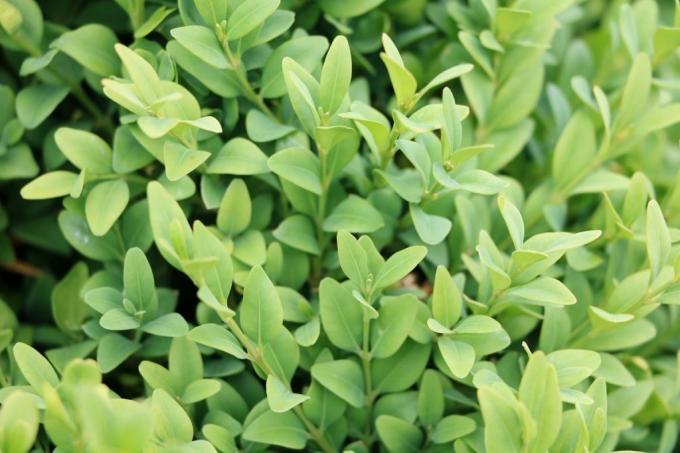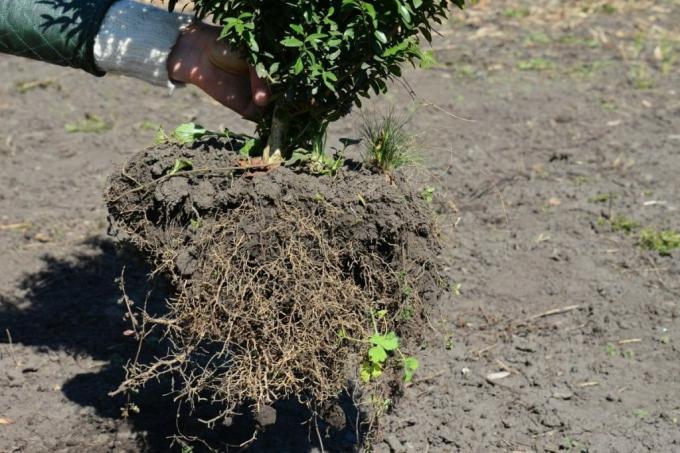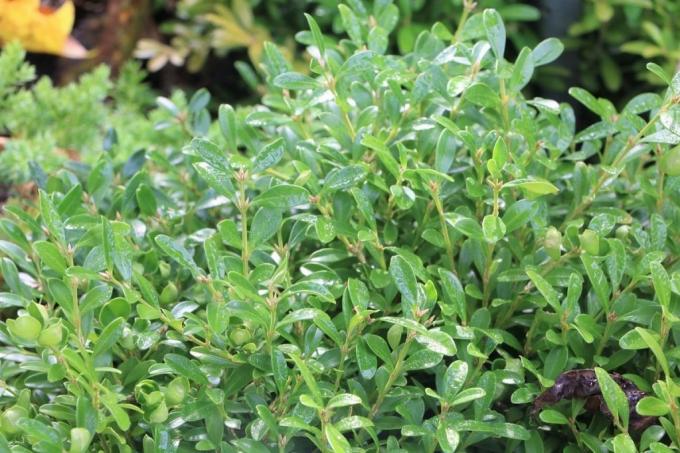
table of contents
- Recognize healthy box trees
- Recognize dried up shoots and leaves
- Is my box tree still alive?
- Boxwood dries up: causes
- Save boxwood
- frequently asked Questions
If a box tree gets dry leaves or shoots, this is not yet a cause for concern. It looks different when the entire plant seems to dry up. When is a dried up box tree really dead?
In a nutshell
- Buchs is prone to care errors, diseases and pests
- There are many possible causes for the boxwood to dry out
- it should be examined more closely before it is eliminated
- if the damage is minor, he can usually still be helped
- if the inner wood is still green, it is not dead yet
Recognize healthy box trees
You can recognize a healthy Buxus by these characteristics:
- well tolerated by cutting, drives after cut vigorously
- compact, dense growth
- evergreen, healthy looking green foliage
- Leaves without discoloration
- Shoot tips not dried up

Recognize dried up shoots and leaves
Individual dry leaves on the boxwood are usually not noticeable in the dense foliage. The damage cannot be overlooked until the outer shoots or a lot of leaves are affected. It usually doesn't take too long from the first dried up leaves to the large-scale shoot deaths on the boxwood, depending on the causes.
Affected leaves and shoots
- discolor first yellow, later brown,
- feel dry and woody,
- crumble between the fingers,
- can be easily removed from the plant or broken off.

Is my box tree still alive?
While individual dead leaves cause no damage, the situation is different with dying shoots. The first signs can usually be removed with scissors, but over time larger and larger parts of the plant are affected. The boxwood turns brown over a large area and dries up. It is then no longer so easy to tell whether the book is still alive or already dead. It is helpful to take a look at cut shoots. If the inner wood is still green, the box is still alive. If there are no more green shoots on the whole plant and the wood is brown even if it has been pruned heavily, the box is dead.
Examine roots
If, despite pruning, there is still uncertainty about the condition of the plant, the roots can be examined. Since a dead box is removed anyway, it doesn't hurt to completely dig up the plant. Dead roots are either as brown and withered as the shoots above ground or black and rotten.

Note: Healthy roots are whitish to light brown and pliable but not fragile.
Boxwood dries up: causes
In addition to maintenance errors such as lack of nutrients or water, there are also causes for dried up box trees Diseases or pests in question. Signs of this are discolored leaves, webs, stunted and eventually dying leaves and shoots. If countermeasures are not taken in good time, the boxwood will eventually dry out completely, so that all further measures will be ineffective.
Note: Boxwood plants can already be sick when you buy them without looking at them. It is better to multiply your own plants.
Save boxwood
Here you will find a list of helpful measures that you can take to save your wood. can take preventive action. For example:
- prefer robust varieties
- choose the right location
- water and fertilize properly
- cut regularly
- Fight diseases and pests
- Protect potted plants in winter

frequently asked Questions
While there are no completely resistant strains, some can hold their own against diseases better than others. For example: Buxus sempervirens 'Arborescens' or 'Elegantissima' and Buxus microphylla 'Herrenhausen' or 'Faulkner'.
First and foremost, it helps to combat the cause, i.e. remove pests and cut back diseased shoots. Fungicides and an airy, dry location help against fungi. Pests can be eliminated by beneficial insects or appropriate biological means.
That is not to be expected, since the Buchs is considered to be very easy to cut and always sprouts anew. If the roots are damaged, however, the plant can run out of strength.
Buchs is usually hardy outdoors. A protected location should be preferred for potted plants. Frozen shoots are cut back in spring.
These include a compacted substrate, improper fertilization, and too much watering. This can cause the roots to die.
